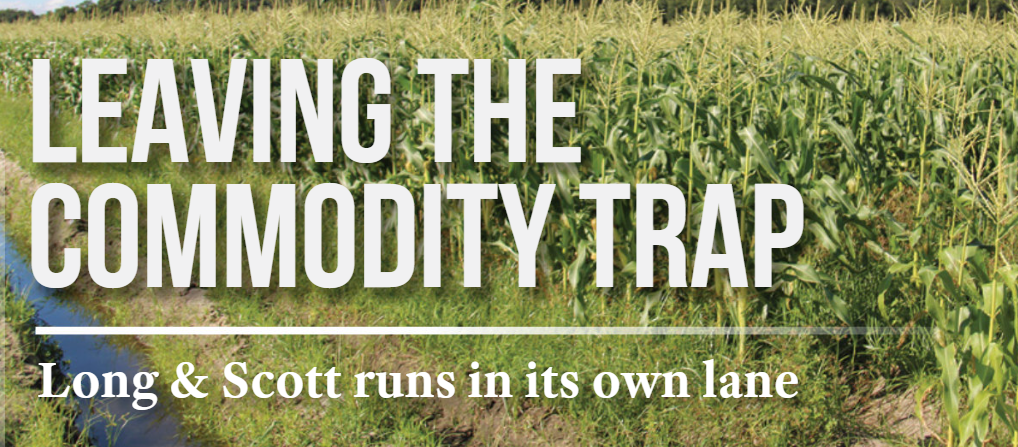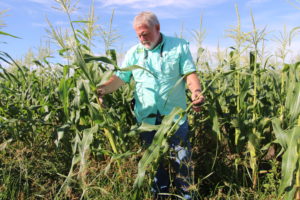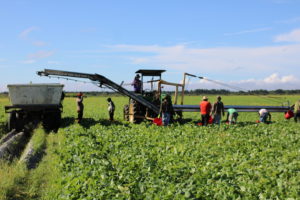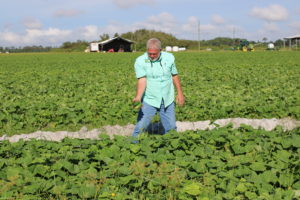

Mar 3, 2023Long & Scott Farms: Leaving the commodity trap
Longtime central Florida grower Long & Scott Farms survives and remains competitive by adapting to changes and diversifying its business and crops.
By altering the way it grows and markets crops, judiciously using chemicals and expanding into agritainment, the Mount Dora, Florida, grower remains the last sweet corn grower in the once prosperous Zellwood, Florida, growing region.


The fourth-generation family farming operation grows pickling cucumbers, cabbage and sweet corn as well as sod and turfgrass on 1,100 acres in two counties northwest of Orlando. Cucumbers and cabbage are the biggest crops.
Long & Scott has been the only grower of Zellwood sweet corn since 1998, when Florida’s corn industry moved south to Palm Beach County as a result of the state shutting down 18,000 acres of Lake Apopka area muck farms. Zellwood was once widely known as the corn capital of the Eastern U.S. Because Long & Scott grows on sand land, it wasn’t forced out.
Escaping the commodity trap
Instead of selling corn in the commodity markets, Long & Scott took a different direction, lowering production from 700 acres to 30 acres, focusing on a gourmet type of corn. The tender triple-sweet varieties produce sweeter corn with better eating qualities. However, they don’t yield as high as other corn and are more finicky to grow, said Hank Scott, president.
Ensuring profitability, Long & Scott maintains a set price throughout the fall to spring seasons, marketing corn to consumers for 50 cents an ear and 30 cents to wholesale customers.
“We wanted to keep the Zellwood sweet corn name alive,” Scott said. “We had to change the way we did some things, trying to diversify and bring more income in. Instead of putting our corn in a crate and matching the commodity guys, we went along with a corn maze and a farmers market and started bagging a half-dozen and two dozen ears.”
In 1998, Long & Scott began the farmers market and in 2000, entered agritainment. Its fall festival attracts 35,000 visitors, and features the corn maze, a zip line and catch-and-release fishing. A plethora of activities, including a large slide and playground, huge bouncing “pillow” and dirt mining, keep children busy. The farm’s mission is to educate families about where their food comes from.


To keep a lid on costs, Long & Scott relies on technology. Soil sampling before planting ensures the ground receives adequate fertilization. It spreads wood fines to return organic material to the ground and reduce fertilizer use.
Long & Scott increased field scouting and controls pests, including corn ear worms and pickle worms, through products such as neem oil and XenTari. Though not organic, harsh chemicals are avoided along with applying the smallest amounts of inputs as possible. Biotreatments are applied.
Limiting inputs
Some synthetic fertilizers are used.
“There are a lot of good products that are identical to what the organic guys do,” Scott said. “We’re trying to build-up our soils to put more organic matter back into our soils. We try to do as much as we can to avoid using too much fertilizer to keep our ground as healthy as possible. We are also trying to change our growing techniques, to get the best yields we can get and the only way we can survive.”
To limit weed growth, Long & Scott expanded cover cropping from the summer to winter.
Cover crops were mostly sorghum. Today, it applies a mixture of daikon radish and sunflowers. To reduce pests, the farm assembles mixes that will best benefit the ground.
The farm likes to experiment with automation. It’s looking into mechanically harvesting cabbage, which it dropped out of for a year due to low returns. Mechanical harvesting is new to the Zellwood area, and Scott said he hopes it will reduce labor costs.
“We are determined and persistent,” he said. “We’re not real rich. We just figured how to keep it going.”
While considering robots and other new technology, Scott remains realistic.


“Where the problem comes in is there isn’t enough profit in farming to make those changes,” he said. “When you talk about getting into robotics, like robotic weeders, and to start going into mechanical harvesting, it takes a lot of machinery on the other end to clean-up the crop and get it ready for packing. If you’re going to spend the money and make the changes, you must spend a lot of money to put in a process to the point to where it’s sellable and packaged right for sale.”
In 1952, Billy Long, the childhood friend of Frank “Sonny” Scott, Hank’s father, began growing sweet corn in Zellwood. After encouragement from Long to grow in Florida, Frank In 1963 relocated vegetable farming operations from Virginia’s Eastern Shore to Florida. Long died in 2016 while the elder Scott semi-retired in the early 2000s and died in 2017. Sonny Frank, Hank’s son, is the overall farm manager and is named after his grandfather Frank.
Unlike Georgia’s red clay soils and Virginia’s dirt, growing in Florida’s sand is challenging. “Coming to Florida, in our area, it’s like farming Daytona Beach,” Scott said. “You have to be a real farmer to grow on sand. If you read the labels, the rates on what you can use on sand is so much different than the heavy or muck soil, because the product is more active or may not be as active on the sandy soil. You have to know what you’re doing.”
Scott graduated from the University of Florida with an accounting degree. In the late 1980s, he took over the farm from his father. His brother, Mark Scott, runs the sod business.
“It (farming) gets in your blood,” Scott said. “I enjoy being out in the open. There’s joy in farming, but it isn’t nearly as fun as it used to be. You have to keep finding ways to push and make it. You change where you must change, adapt and become more proficient.”
— Doug Ohlemeier, assistant editor
Second photo: Long & Scott Farms has exited the commodity trap by adapting to growing challenges and differentiating itself from other growing organizations, Hank Scott said. Photos: Doug Ohlemeier
Third photo: Workers harvest pickling cucumbers, Long & Scott Farms’ largest crop, in September 2022.
Bottom photo: Long & Scott Farms grows sod and turfgrass, but it three main vegetable crops are picking cucumbers, cabbage and sweet corn.














